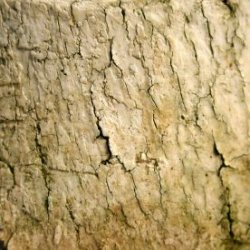Scrimshaw is the traditional art of drawing or etching on bone or ivory. The most notable people who practiced the art of scrimshaw were whalers and the Inuit. Sailors on board whaling ships often did scrimshaw as a way to pass the time on long voyages. Most of the early scrimshaw done by whalers portrays maritime life. Inuit people would depict scenes of their daily lives, their hunts and their activities.
Whalers would primarily use needles to do their scrimshaw, and most of their work was done on whale teeth and bone. Whale bone and teeth were obviously easy to come by and were not a valuable part of the catch. Early whalers were killing whales for the oil and not for the teeth or bone.
Once the sailor had his design etched, he would then darken it by using either tobacco juice or soot. Many of the early designs lacked detail, and the execution was not very good. This could be because most of the work was done aboard ship and often at night by small lanterns. Today’s Today, artists do not have to contend with unpredictable seas or winds. They not only work with good lighting but also often use a magnifying glass to help with really detailed areas.
Scrimshaw is different from carving in the way that it is done. Carving is done, for the most part, with knives whereas scrimshaw is done using needles. A person who does scrimshaw is called a scrimshander.
To make a scrimshaw piece the first thing you have to do is prepare the surface. Bone and teeth are not perfectly uniform so it is best to sand off any loose or rough areas, you want to make the surface as smooth as possible. When you have finished sanding you are going to have to apply a very light coat of renaissance or paste wax.
There are two main reasons why you want to wax your piece. The first is that the wax will fill in any cracks or slight blemishes that might be in the bone. You do not want any ink to accidentally sink into one of these tiny cracks and ruin your work. The wax will also make it easier to remove any excess ink on the surface of the piece. You want to be certain that the ink will only sink into the places where you want it to.
Once you have prepared your surface, you can begin making your design. The needle is used in two different ways. It can be used to poke holes straight into the bone. The depth of the hole and the size of the needle used will help to create different effects. Darker or shaded areas are often made by making very small holes, close together.
The second technique is to drag the needle to create lines or scratches in the surface. Once again, the depth and width of the line will add dimension to your carving. This is an area where you have to be careful. Scratches should be done by dragging since, if you try to push the needle forwards you may inadvertently dig down into the bone.
Once you have completed your design, you are going to have to darken it. Indian ink is one of the most common choices of scrimshanders. You can use a cue tip, a cotton swab, a small piece of sponge or a cloth, to apply ink to your design. Most of the ink will automatically sink into any depressions that you have made. To remove excess ink, use a clean cloth, but be sure that you allow the ink to dry before you start the wiping process. You do not want to be pulling the wet ink out of the depressions.
If you are planning to use color on your scrimshaw piece, it is essential that you plan carefully. You have to work with the lightest colors first. Be sure that you allow enough time between inking for the color to dry before you move on to the next.
The final step is to apply another coat of wax.
Scrimshaw is a truly unique and beautiful form of art. Many animal rights activists have a bad attitude towards scrimshaw because, in the past, it has been done using animal teeth and bone. Many of these animals were hunted and slaughtered often to the point of extinction. Today someone who wishes to do scrimshaw has a wide variety of other materials available to them, including resin and nuts, which closely resemble ivory or bone.
Google+
